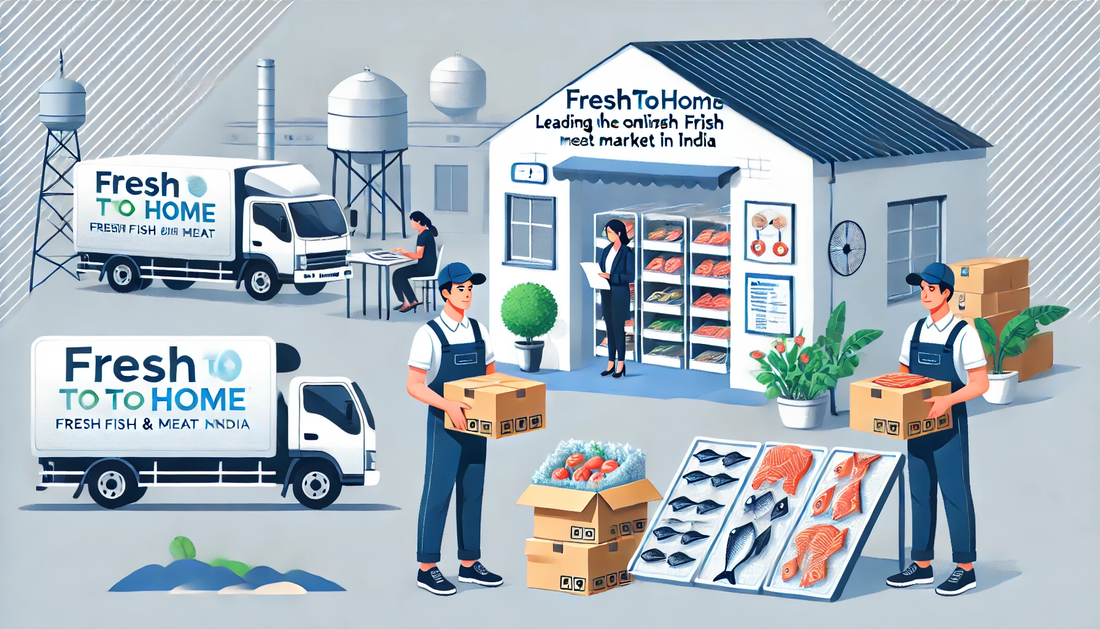In the competitive landscape of online grocery shopping, FreshToHome has emerged as a leader in the fresh fish and meat market in India.
By focusing on quality, transparency, and convenience, FreshToHome has set new standards in the industry.
This blog explores how FreshToHome achieved its success and provides actionable takeaways for startups looking to replicate their strategies.
The Genesis of FreshToHome
Founded in 2015, FreshToHome started with a mission to provide customers with fresh, chemical-free fish and meat delivered directly to their homes.
The founders recognized a significant gap in the market, as consumers often struggled to find high-quality, fresh products.
By leveraging technology, FreshToHome transformed the way people access fresh seafood and meat.
Key Strategies Behind FreshToHome’s Success
FreshToHome’s growth can be attributed to several strategic initiatives that startups can learn from:
1. Commitment to Quality
FreshToHome emphasizes sourcing only the highest quality fish and meat from local fishermen and farmers. This commitment ensures freshness and builds trust with customers.
Startups should prioritize quality in their offerings to enhance customer loyalty.
2. Transparency in Sourcing
The company provides transparency in its sourcing process by sharing information about where and how products are sourced. This practice builds consumer confidence.
Startups should adopt transparency as a core value to foster trust with their customers.
3. Technology-Driven Operations
FreshToHome utilizes advanced technology for inventory management, logistics, and delivery tracking.
This tech-driven approach streamlines operations and enhances the customer experience. Startups should explore how technology can optimize their processes and improve efficiency.
4. User-Friendly Platform
The FreshToHome app and website are designed for ease of use, allowing customers to browse products, place orders, and make payments seamlessly. Startups should prioritize user experience to ensure customer satisfaction and repeat business.
5. Focus on Delivery Logistics
FreshToHome has established a robust logistics network to ensure timely delivery of fresh products. The company uses temperature-controlled vehicles to maintain product freshness during transit.
Startups should invest in logistics to enhance delivery speed and product quality.
6. Marketing and Branding
FreshToHome employs effective marketing strategies that highlight its unique selling points, such as freshness and quality. Startups should develop clear messaging that resonates with their target audience to enhance brand visibility.
7. Customer Engagement
FreshToHome actively engages with its customers through social media, newsletters, and feedback mechanisms.
This engagement helps them understand customer preferences and improve their offerings. Startups should prioritize customer engagement to build a loyal community.
8. Diverse Product Range
The platform offers a wide variety of fish, meat, and other related products, catering to diverse customer preferences. Startups should consider expanding their product range to attract a broader audience.
Actionable Takeaways for Startups
Here are actionable takeaways for startup founders inspired by FreshToHome’s journey:
- Prioritize quality sourcing to build customer trust and loyalty.
- Adopt transparency in your sourcing and operational processes.
- Leverage technology to streamline operations and enhance efficiency.
- Focus on user experience to facilitate easy transactions.
- Invest in logistics to ensure timely delivery of fresh products.
- Develop effective marketing strategies to communicate your unique value.
- Engage with customers to understand their needs and preferences.
- Consider offering a diverse range of products to attract various customer segments.
Conclusion
FreshToHome’s innovative approach to the online fresh fish and meat market showcases the importance of quality, transparency, and technology.
By adopting similar strategies, startups can create impactful solutions that resonate with consumers.
The demand for fresh and quality food continues to grow, and with the right strategies, startups can thrive in this dynamic market.










